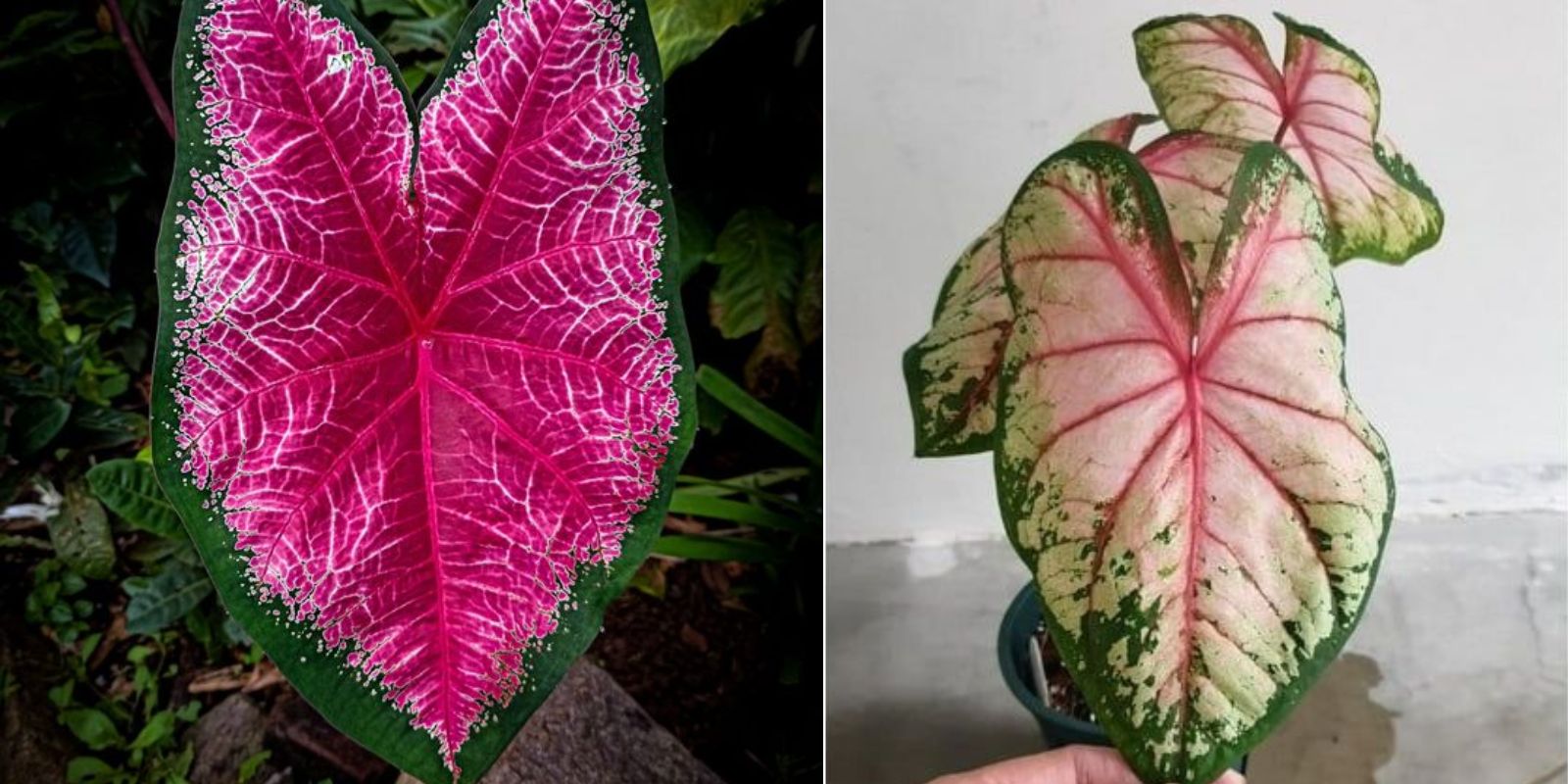Introduction
The Pink Elephant Ear (Caladium spp.) is a captivating tropical plant admired for its striking foliage. Known for its vibrant pink, white, and green leaves, this plant adds a splash of color and texture to gardens and indoor spaces alike. Whether you’re an experienced gardener or a novice looking to bring some tropical flair to your home, the Pink Elephant Ear is a fantastic choice. In this guide, we’ll cover everything you need to know about growing and caring for this beautiful plant.
Understanding the Pink Elephant Ear
1. Overview of Caladium spp.
Caladiums, commonly known as Elephant Ears, are tropical plants native to South America. They are celebrated for their large, heart-shaped leaves that come in various colors and patterns. The Pink Elephant Ear, in particular, features bold pink and green variegation, making it a standout in any plant collection.
2. Ideal Growing Conditions
- Light: Pink Elephant Ears thrive in bright, indirect light. They prefer a location where they receive filtered sunlight, such as near a window with sheer curtains or under the canopy of taller plants. Direct sunlight can scorch the leaves, so it’s essential to provide a protected light environment.
- Temperature: These plants prefer warm temperatures between 65-85°F (18-29°C). They are sensitive to cold and frost, so they are best suited for USDA hardiness zones 9-11 or as an indoor plant in cooler climates.
- Humidity: Being tropical plants, Caladiums enjoy high humidity. If you’re growing them indoors, consider placing a humidifier nearby or regularly misting the leaves to maintain the required humidity levels.
Planting Pink Elephant Ears
3. Choosing the Right Spot
Select a location that offers the appropriate light conditions and has good air circulation. For indoor plants, a bright room or a spot near a window with filtered light is ideal. Outdoors, choose a shaded area that mimics the plant’s natural tropical habitat.
4. Preparing the Soil
Pink Elephant Ears thrive in well-draining soil that retains moisture but doesn’t become waterlogged. A mix of potting soil, peat moss, and perlite works well. If planting in the garden, ensure the soil is enriched with compost to improve drainage and fertility.
5. Planting the Bulbs
- Timing: Plant the bulbs in the spring after the last frost. If you’re growing them indoors, you can plant them at any time of year.
- Depth and Spacing: Plant the bulbs 1-2 inches deep, with the pointed end facing upward. Space the bulbs 6-12 inches apart to allow for their full growth.
- Container Planting: If growing in pots, choose a container with drainage holes. Fill it with the prepared soil mix and plant the bulbs as described.
Caring for Your Pink Elephant Ear
6. Watering
Proper watering is crucial for the health of Pink Elephant Ears. Water the soil thoroughly after planting and keep it consistently moist. Allow the top inch of soil to dry out before watering again to prevent waterlogging. During the growing season, which is typically spring and summer, you may need to water more frequently. In the winter, reduce watering as the plant’s growth slows down.
7. Fertilization
Feed your Pink Elephant Ear with a balanced, water-soluble fertilizer every 4-6 weeks during the growing season. This promotes healthy foliage and vibrant colors. Follow the manufacturer’s instructions for application rates to avoid over-fertilizing, which can lead to nutrient imbalances and plant stress.
8. Maintenance
- Pruning: Remove any yellowing or dead leaves to keep the plant looking its best and to encourage new growth. Pruning also helps prevent disease and pest issues.
- Cleaning: Wipe the leaves with a damp cloth to remove dust and debris. This not only keeps the plant looking shiny but also improves its ability to photosynthesize.
9. Pest and Disease Management
- Common Pests: Pink Elephant Ears can be susceptible to pests such as aphids, spider mites, and mealybugs. Regularly inspect the plant for signs of infestation and treat with insecticidal soap or neem oil if needed.
- Disease: Root rot can occur if the plant is overwatered or if the soil does not drain well. Ensure proper watering practices and well-draining soil to prevent this issue.
Winter Care and Storage
10. Preparing for Winter
In cooler climates where frost occurs, dig up the bulbs before the first frost. Clean them gently and allow them to dry in a cool, dry place. Store the bulbs in a paper bag or breathable container and keep them in a cool, dry location until spring.
11. Indoor Care
For indoor plants, continue to provide bright, indirect light and maintain consistent humidity levels. Adjust watering and fertilization according to the plant’s reduced growth rate in the winter.
Benefits and Uses of Pink Elephant Ear
12. Aesthetic Appeal
The Pink Elephant Ear is a showstopper in any setting. Its colorful and dramatic foliage makes it an excellent choice for adding interest to garden beds, containers, and indoor plant collections. The vibrant pink and green hues can complement a variety of design styles and color schemes.
13. Easy to Grow
Despite its exotic appearance, the Pink Elephant Ear is relatively easy to grow and maintain. With the right conditions and care, it can thrive and provide continuous beauty throughout the growing season.
Conclusion
The Pink Elephant Ear (Caladium spp.) is a stunning addition to any garden or indoor space, offering vibrant color and tropical charm. By following the guidelines outlined in this article, you can successfully grow and care for this beautiful plant, ensuring it remains a focal point of your green space. Embrace the lush beauty of the Pink Elephant Ear and enjoy the tropical flair it brings to your home and garden. 🌿🌸

